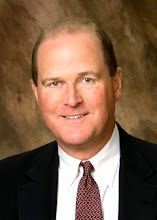11/26/08
In my 11/21/08 Commentary, in which I announced that my posture toward the stock market had moved from decidedly and unrelentingly bearish to a stance that could perhaps best, though clumsily, be characterized as somewhere between mildly bearish and mildly bullish, I mentioned that
“I wish I could say that there is plenty of anecdotal evidence (which readers know I like) that the economy is turning around, but there isn’t. I notice the restaurants I frequent (primarily low priced) are slightly busier than they used to be and there are fewer “For Sale” signs around the suburban paradise we inhabit and its environs. But that is pretty thin gruel. Again, however, markets turn before the economy”
Since then, I have been struggling (perhaps too strong a verb) to find some signs that the economy may be turning around, perhaps to fortify my confidence in my shift in attitude toward the market, and I may have found some.
This morning, the Commerce Department reported that personal spending fell by 1.0% in October, the sharpest drop in seven years. Most experts and conventional thinkers were sullen and down in the mouth about this latest development, offering it as more evidence that we are plunging precipitously into an economic Hades. I, on the other hand, think this is terrific. Why? In order to explain this onset of uncharacteristic and uncomfortable bout of optimism, I offer the following statistics: (The first three columns are changes from the previous month; the last is a simple ratio.)
Disposable Personal
Personal Personal Personal Savings/
Income Spending Income (DPI) DPI
October 0.3% -1.0% 0.4% 2.4%
September 0.1% -0.3% 0.1% 1.0%
(Okay, so Blogspot cannot handle columns very well. The gist of what was supposed to be the above is that personal income and disposable personal income are rising while personal spending is falling, resulting in rapidly increasing personal savings/disposable personal income ratio. This trend has picked up considerably from September to October. I apologize that that didn’t come through when my Word document was translated to Blogspot.)
This is obviously (at least to yours truly) good news. Why? If these numbers are any indication (always a big “if” with two months of data), people are learning not to spend every last dime on which they get their hands, and then some Our economic problems have at their source the chronic inability of Americans (or at least Americans of my and, perhaps, later generations) to save money. If we can get Americans to learn to save again, we perhaps can find our way out this economic problem. If we can’t, we have no hope whatsoever of maintaining (or perhaps regaining) our status as the world’s preeminent economic power.
Conventional thinkers scoff at the notion outlined in the last paragraph. They argue that we will never emerge from this recession if people don’t spend and borrow again. But, as I have said repeatedly in the past (and most recently, at great length, in my 11/11/08 piece, “Happy (?) Days Aren’t Here Again” and at lesser length in my 11/14/08 piece, “A Random Walk Toward Hooverville”), policies designed to get people to spend and borrow more are the financial equivalent of that temporarily soothing shot of JTS Brown in the morning. We’ll feel better for a few hours, but then the old brown bottle flu comes back with even greater fury.
Others might argue that people aren’t spending because their incomes have dropped. But, while allowing that figures don’t lie but liars figure, the above numbers tell a different story. Income is up, but spending is down. Even if you don’t believe that income is up, you have to concede that spending is down more than income. In any case, we are saving more of our income than we have in the past, which would be the case if we were saving ANY portion of our personal income.
Still others might argue that people are saving because they are afraid of the, and their, economic situation. To which I would reply that fear is, while a motivator of last resort, a great motivator nonetheless.
Please don’t misunderstand me; this one set of statistics is not evidence of a rapid, or even a slow, economic turnaround. Given the depths of our problems and the maladroit responses to it from Washington that look to be continued under the Obama administration (See the references in the previous post to the appointment of Tim Geithner as Treasury Secretary.), we could be in this economic sewage drain for a long time. But, as much as it feels awkward for me to do so, I am finding a few glimmers of hope in an otherwise gloomy situation.
Wednesday, November 26, 2008
Subscribe to:
Post Comments (Atom)

No comments:
Post a Comment